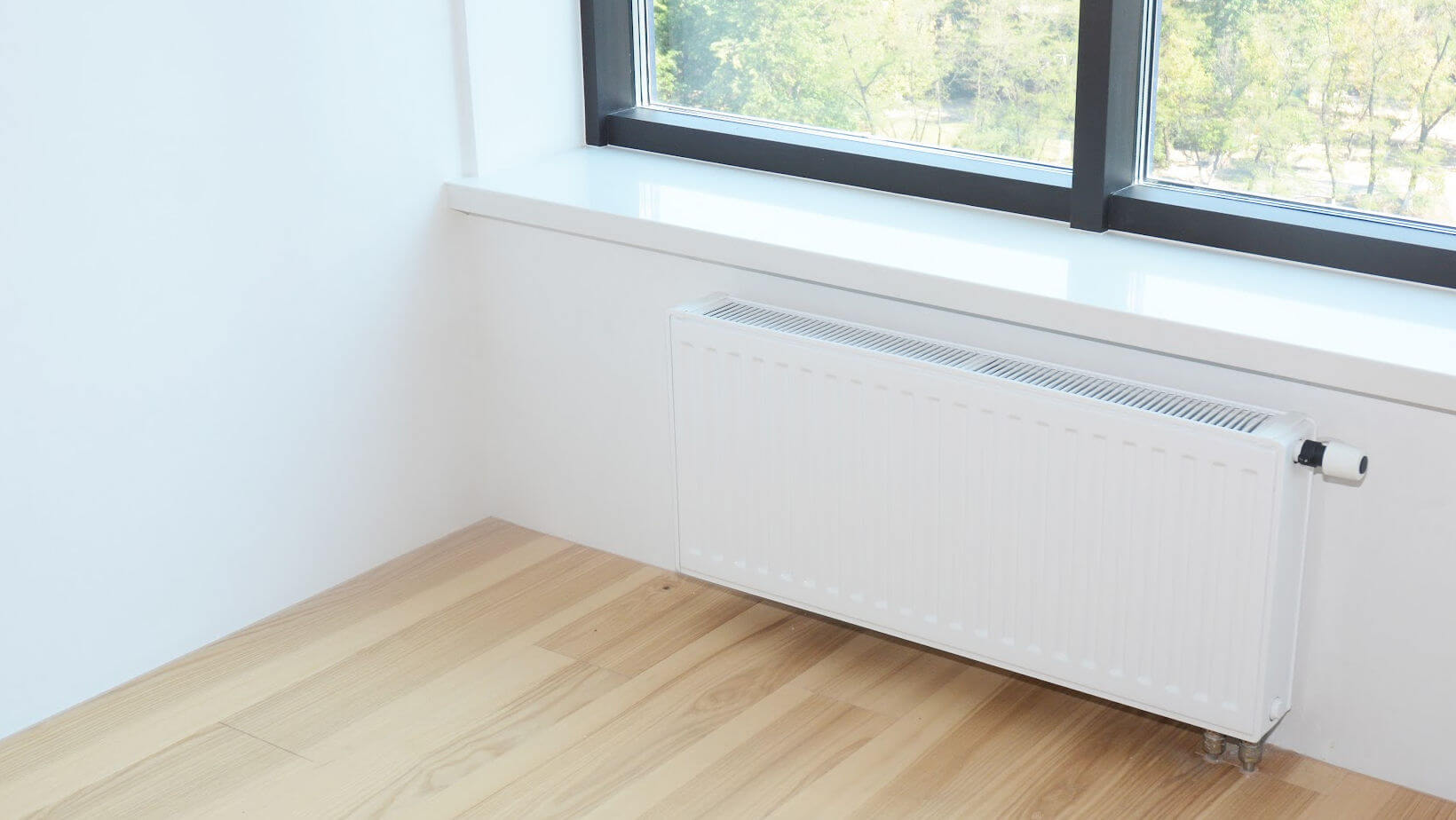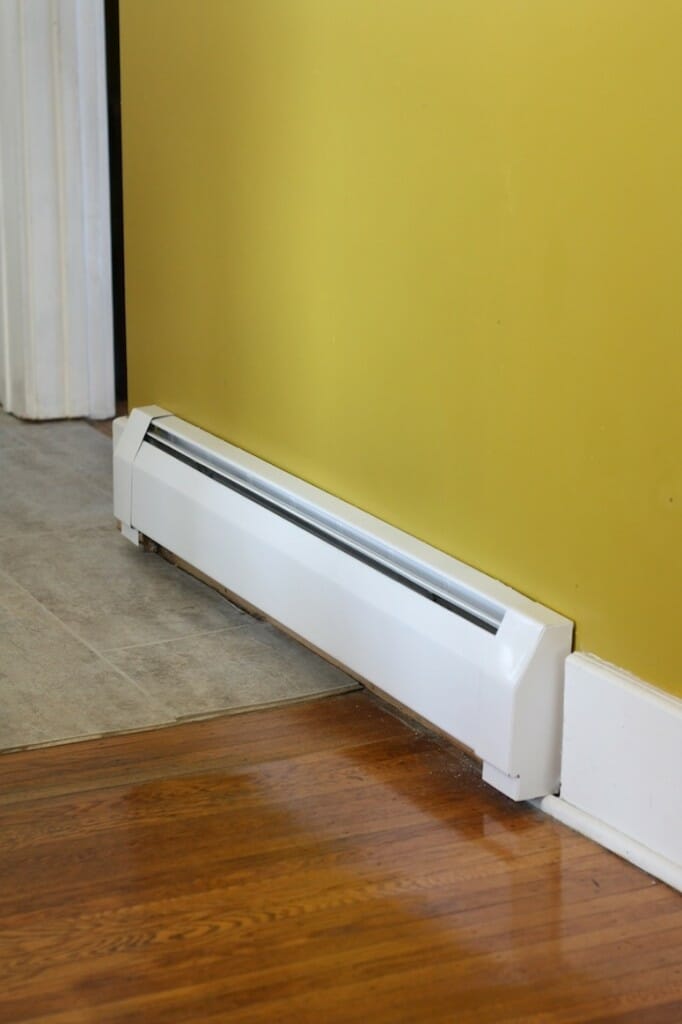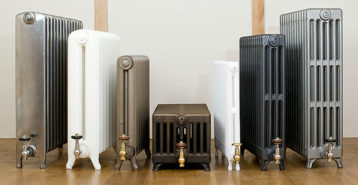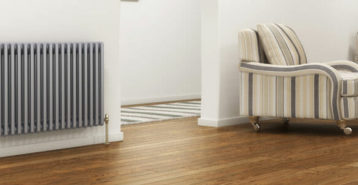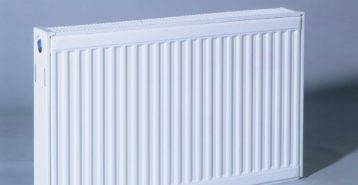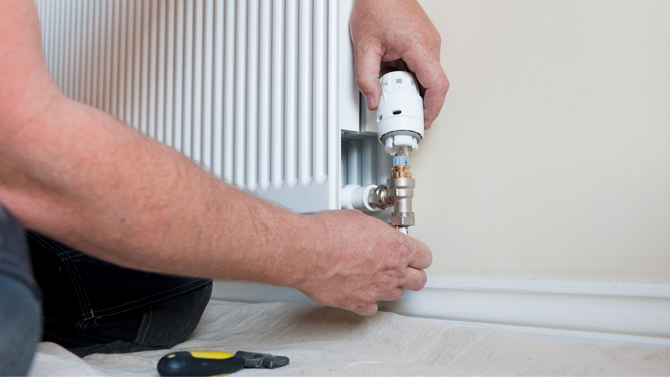Baseboard Radiator Installation Costs
Most homeowners pay a mid-range price for baseboard heat. Expect a national average around $750, with a typical range of $400 to $1,070 for installation. Final pricing depends on the heater type, room size, and the condition of your existing system.
Quick Facts
| Item | Typical Cost | Notes |
|---|---|---|
| Cost per heater installed | $400 to $1,070 | Includes basic installation. |
| Heater unit only | $65 to $200 | Price varies by length and output. |
| Common use | Bedrooms, hallways, small living spaces | Compact, low-profile design saves wall space. |
| Works with | Electric or hydronic (hot-water) systems | Choose based on your home’s setup. |
| Maintenance | Low | Keep covers clean and fins free of dust for best performance. |
Factors That Affect Baseboard Heating Costs
Several variables influence your total HVAC installation costs: materials, labor, and the project’s complexity play the largest roles.
- Heater Type: Electric units are typically less expensive to buy. Hydronic systems cost more but pair with a boiler and can provide steadier heat.
- Length and Output: Longer baseboards and higher British thermal unit (BTU) ratings cost more.
- Number of Units: More rooms or zones increase material and labor.
- Electrical or Plumbing Work: New circuits, dedicated breakers, or hot-water piping add to labor.
- Home Layout and Access: Tight spaces, furniture moving, or working around finished surfaces can raise installation time.
- Finishes and Controls: Thermostats, covers, and trim pieces add to the total.
Baseboard Heating Installation Process
A straightforward install follows a few common steps. Your contractor will confirm sizing and compatibility, then complete safe, code-compliant work.
- Assessment and Sizing: Measure the room and select the right heater length and BTU output.
- Preparation: Turn off power or shut down the boiler, protect floors, and mark mounting locations.
- Mounting: Secure the baseboard housing level along the wall near the floor.
- Electric: Run approved wiring, install a dedicated circuit or breaker if needed, and connect the thermostat.
- Hydronic: Connect supply and return lines, purge air, and verify leak-free joints.
- Testing and Balancing: Restore power or hot water, check operation, and confirm the thermostat cycles properly.
- Cleanup and Walkthrough: Review operation, safety clearances, and maintenance tips with the homeowner.
Baseboard Radiator Types
Choosing the right type helps match comfort, cost, and your home’s existing system.
- Electric: Heats with built-in electric elements. Easy to install and great for room-by-room control.
- Hydronic (Hot-Water): Uses a boiler to circulate hot water through copper tubes and aluminum fins. Delivers steadier, longer-lasting warmth.
- Dual-Energy: Combines both types — electric in additions or basements, hydronic in main living areas — for flexible comfort and budgeting.
Advantages and Drawbacks of Baseboard Heat
Baseboard heat is compact and predictable, but it isn’t the best fit for every home. Here is how it compares to a few common heating options.
| Feature | Baseboard (Electric/Hydronic) | Furnace (Gas) | Heat Pump (Ducted or Ductless) | Radiant Floor |
|---|---|---|---|---|
| Upfront cost | Low to moderate | Moderate | Moderate to high | High |
| Operating cost | Moderate (electric) to moderate-low (hydronic) | Moderate | Low to moderate | Low to moderate |
| Comfort | Even, quiet, room-by-room control | Fast whole-home heat, can be drafty | Even heat, heating and cooling | Very even, warms surfaces |
| Space impact | Low profile along walls | Requires ducts and closet or attic unit | Indoor/outdoor units; minimal ducts for ductless | Invisible; underfloor |
| Best use | Add-ons, zoned rooms, retrofits | Whole-home systems with existing ducts | Energy-conscious homes, mild to cold climates | Premium comfort upgrades |
Pros
- Compact and Flexible: Low-profile units fit bedrooms, hallways, and additions without ducts.
- Quiet Operation: No blower noise — just gentle, even warmth.
- Zoned Control: Heat only the rooms you use to manage costs.
- Straightforward Maintenance: Keep the covers and fins clean for efficient airflow.
Cons
- Less Radiant Warmth: Heat is primarily convection-based, so you do not feel the same “sun-like” warmth as panel radiators or radiant floors.
- Wall Real Estate: Units run along walls, which can limit furniture placement.
- Electrical or Boiler Needs: Electric models may need dedicated circuits. Hydronic models depend on a boiler in good condition.
Baseboard Radiator Installation FAQs
Do you need an electrician to install a baseboard heater?
If you are installing an electric baseboard heater, a licensed electrician should handle wiring, dedicated circuits, breakers, and thermostat connections. For hydronic baseboards, a licensed plumber or HVAC pro connects the hot-water lines and controls.
How much does it cost to have baseboard heaters installed?
Most homeowners pay $400 to $1,070 per heater installed, with a national average around $750. The unit alone typically costs $65 to $200. Your total depends on heater length, type, and any electrical or plumbing work.
Can I install a baseboard heater myself?
DIY is not recommended. Electric units require code-compliant wiring and proper load calculations. Hydronic units require leak-free piping, air purging, and system balancing. Professional installation helps ensure safety, performance, and warranty protection.
What are the rules for baseboard heaters?
Local building codes set requirements for wiring, circuit sizing, thermostat placement, and clearances from furniture, drapes, and outlets. Your installer will follow manufacturer instructions and local codes — the safest path for long-term performance.
Next Steps
A properly sized, professionally installed baseboard heater can deliver quiet, even heat with a compact footprint. If you are updating one room or adding several, gather a few quotes to compare scope, labor, and line-item materials. We can help you connect with vetted local pros. Read reviews, compare options, and choose the installer who fits your project and budget.
Explore other radiator types:
- Radiator Installation, Repair, and Maintenance
- Column Radiator Heating
- Cast Iron Radiator Buying Guide
- What Are Panel Radiators?
Compare top-rated HVAC pros in your area.
Read real homeowner reviews, explore qualifications, and view promotions. Modernize makes it easy to browse professionals and find one that will be perfect for your project.
